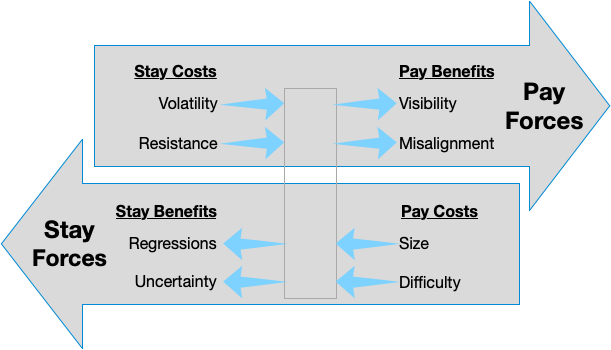I am assuming that you basically know what a supply chain attack is, but briefly, it’s when the code you install as a dependency in your development project contains malware. Unfortunately, all dependencies are code, and this code is usually run at a high privilege without needing to be signed.
The main thing it will try to do is grab keys and secrets from your .env files or environment variables and exfiltrate them. Some are targeted at blockchain developers and will try to steal their coins.
This is not a comprehensive guide. I am documenting my decisions based on my needs.
Like William Woodruff, I agree that We Should All Be Using Dependency Cooldowns. TL;DR is in the title. Essentially, never install a dependency that isn’t at least a few days old. The downside is defense against 0-day security fixes. If this is an issue, you could take the time to investigate and adopt the fix with an override.
The other broad advice with little downside is to not allow install scripts to run. You might still install malware, but if you let the install scripts run, they own you immediately. But since you are likely about to run the code inside your project, it’s not much protection. I do it anyway. The downside is when a dependency needs its post-install script to work. I used can-i-ignore-scripts to check for this issue when I used npm.
Ultimately, though, I have decided to leave the npm ecosystem and stop using node and React. Other ecosystems can have supply chain problems, but npm is having them on a regular basis because they are a prime target, and their practices have not scaled enough to deal with this.
I have also left Cursor and gone back to VSCode because Cursor’s fork cannot install the latest version of VSCode extensions. Extensions are also part of the supply chain and can be either malware or a hacking vector, so not being able to update them is not an option for me.
My next decision was to build a dedicated machine for software development. This machine does not have my personal data or information on it. It is not logged into any personal service (like my email). I have not yet dockerized all of my dev environments on it, but that’s a likely next step.
I also limit my dependencies. Another benefit of leaving the JS ecosystem is that Python isn’t as reliant on so many tiny dependencies. I was shocked at how many dependencies React, TypeScript and node/Express installed (I counted 10s of thousands of files in node_modules), and this is before you have written one line of application code. I like the batteries-included ethos of Django and Python. Most of what I need is built-in.
I have written a lot about dependencies and how it’s tech debt the moment you install it.
- Third-party Dependencies are Inherently Technical Debt
- Dependency Based Tech Debt
- Policies that reduce dependencies
My final defense against supply chain problems is to have a regular dependency updating policy. Of course, this needs to be done with a cooldown, but my main reason to do it is because ignoring dependencies makes it very hard to do something about problems in the future. The more out of date you are, the harder everything is. Regular updating will also remind you of how bad it is to have dependencies.
To make this palatable, I timebox it. It really should take less than an hour for my project. Even at Trello, it only took a few hours to update the iOS project, which we did every three weeks. You also need extensive, automated test suites and time to test manually.
If updating takes longer for some reason, then the dependency that is causing this is now suspect. I will probably plan to remove it. If I need it (like Django), then I consider this a dry-run for a project I need to plan.
